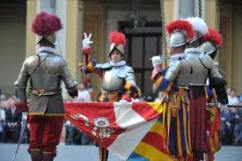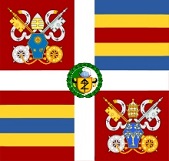 History of the Family FISCHLI
History of the Family FISCHLI
The origins
The origins of the Family Fischli are, as often in Switzerland, a little bit difficult
to define.
I am native of Naefels in the canton of Glaris. It is what that is registered on my
birth certificate and my passport.
One always repeated to me that the Family was native of this township and I have never
tried to know further. It is indeed in this region, between Naefels, Mollis, Niederurnen
and Oberurnen, that we find the biggest concentration of Fischli in Switzerland (and by
extrapolation to the world). It is enough to consult the phone directories to realize it.
My recent research in order to establish my family tree and to complete the history of the
blazon showed however that there is another "melting pot" of Fischli in Switzerland. It is
located in the region of Arth, in the canton of Schwyz. Indeed, Martin Styger writes in
"Wappenbuch des Kantons Schwyz" that families of farmers and journeymen are indicated between
Küssnacht, Immensee and Arth already in 1354, after the remembrement of lands bought back to
the Austrians. The Fischli of Glaris are as for them signalled only in 1565, especially in
Linthal, with however mention of a strong branch already well settled in Naefels and Middle-class
person of the place.
Nobody can say even now which of both Families is the most ancient and have possibly "engendered"
the other one.
I will when-even remain faithful to what one taught me and will continue to be "glaronais" (of
Naefels) and to think that the whole Family has her origins in this canton.
Switzerland and her cantons
Switzerland is a "Confederation" constituted by numerous cantons and half-cantons, having each his government, his laws. Of this fact there are a lot of differences between them, what is demonstrated for example by the school, fiscal, electoral, judicial systems, etc., and this even between neighboring cantons. They simply delegated certain constraints to the Federal state, for example the monetary system, the defense, some institutions not supporting the diversity (railroad, national roads).
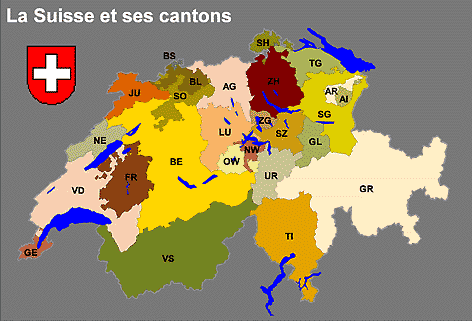
To tell the history of Switzerland, even summarized, would be too long and I send you back at present on the sites treating the topic if you want to deepen your knowledge.
Glaris (Gl)
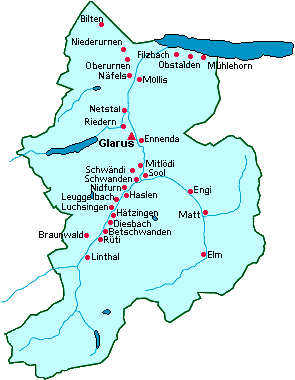
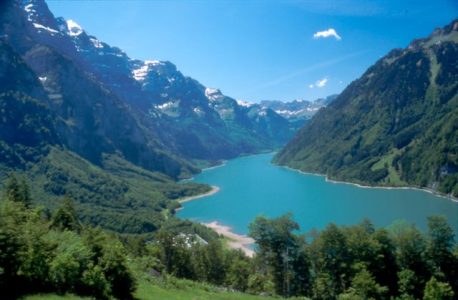
The canton of Glaris is situated in oriental part of Switzerland, South of the lake of Wallenstadt and edged of the cantons of Saint-Gall, Graubünden, Uri and Schwyz. Its surface is about 684 km2 with a population of 38'479 inhabitants (situation in january 2011)(1'157'000 inhabitants (situation some 1998)). It is the thirteenth canton to have entered the Confederation, in 1352. One speaks German there. It shows very beautiful alpine landscapes and prides to possess the most beautiful lake of Switzerland (the Klöntalersee above Riedern on the West of Glaris - picture).
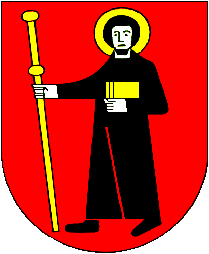
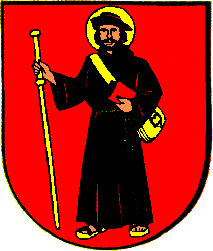 The cantonal coat of arms represents, on red bottom, Holy Fridolin, all of black clothed and carrying
a yellow halo, walking towards the right. He holds in the right hand a stick and in the left hand the
Bible, all two of yellow color. In heraldic language it gives: muzzles in the
missionary Fridolin heading toward the dextre, clothed of sand, the naked head, turned toward the
spectator, nimbée of gold, holding the dextre a bumblebee of the same and the senestre a book of the
last
The cantonal coat of arms represents, on red bottom, Holy Fridolin, all of black clothed and carrying
a yellow halo, walking towards the right. He holds in the right hand a stick and in the left hand the
Bible, all two of yellow color. In heraldic language it gives: muzzles in the
missionary Fridolin heading toward the dextre, clothed of sand, the naked head, turned toward the
spectator, nimbée of gold, holding the dextre a bumblebee of the same and the senestre a book of the
last
On the left, the modern coat of arms presented by the Executive Board on June 25th, 1959. On the right
coat of arms of Glaris in 1941.
We can notice if we refer to elders engravings (on the right) that the besace and the hat disappeared,
that the sandals have been replaced by "shoes" and that the book is enameled of gold. Louis Mühlemann,
in his treaty " Coat of arms and Flags of Switzerland ", greets the deletion of the accessory (besace),
other details, what improves the remote effect, but regrets however the white color of the face and hands,
giving him an aspect a little "artificial", however.
Schwyz (Sz)
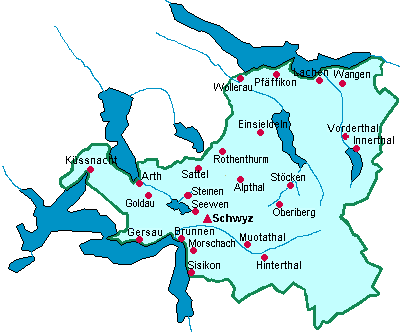
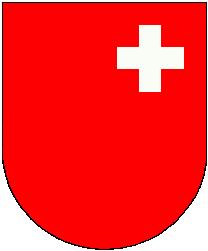 The coat of arms of Schwyz is very temperate, red with a white cross in its left superior corner (contrary
to the flag that shows it to the right, on the side of the shaft). In heraldry always:
Of muzzles to the croisette of silver to the chief's canton senestre. Originally, they were entirely
red and it is only in 1729 that the croisette appears. Since then, it is always present. It has to remind that
on the former flags, entirely red, it was often added a "franc-canton" containing the image of the Christ's
picture in crosses or the scenes of the crucifixion. This had been granted by king Rodolphe in 1289.
The coat of arms of Schwyz is very temperate, red with a white cross in its left superior corner (contrary
to the flag that shows it to the right, on the side of the shaft). In heraldry always:
Of muzzles to the croisette of silver to the chief's canton senestre. Originally, they were entirely
red and it is only in 1729 that the croisette appears. Since then, it is always present. It has to remind that
on the former flags, entirely red, it was often added a "franc-canton" containing the image of the Christ's
picture in crosses or the scenes of the crucifixion. This had been granted by king Rodolphe in 1289.
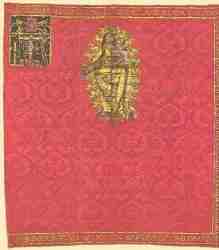
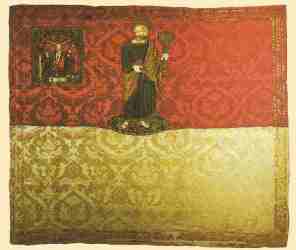
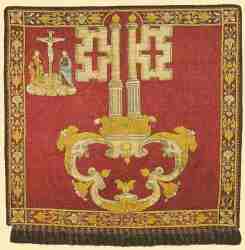
Deployment, migration
The last centuries saw the explosion of numerous families at the time of big migrations due to economic,
social or demographic factors. The Fischli did not fail to these movements, with a dissemination on the
whole globe but a particular affinity for the two America.
There were several Swiss emigrations in the last 400 years with several big periods:
- 1640-1690 following the war of 30 years and through the opportunities offered by the king of France and the German princes for an installation in territories emptied to 90 % of their original population.
- 1690-1740 mainly religious emigration: the Mennonites (anabaptists) have been pursued and have been hunted. Main destinations: Territory of Belfort (F), Sainte-Marie-aux-Mines (F), USA.
- 1740-1840 period of big increase of the population (few illnesses and wars) but not of the number of agricultural exploitations causing a scarcity and whose consequence is a strong emigration, towards USA and Canada mainly.
- 1840-1910 emigration for reasons of export of technologies towards the neighboring regions (clockmaking mainly, especially towards Franche-Comté), and emigration further to governmental agreements towards South America: 1869-1880 and 1883-1900, mainly Brazil, Argentina and Chile.
In my opinion, the migrations that can can interest us in the first place are those of 1690-1740, religious factors, and of 1740-1840, economic factors.
In 1525, a religious movement creates itself to show its disagreement with the Reformed Church of state about the baptism. His adepts were considered as heretics, at the same time by the Roman Catholic Church and by the Reformed Church. It didn't stop this Anabaptist movement from spreading in Switzerland and in Europe. Some of his members, known as "Mennonites", according to their first "leader", Menno Simmons, a former catholic priest, escaped the persecutions and emigrated in more tolerant cantons, in Alsace, Germany, Holland and especially America. Later in the USA, towards the end of the XVIIth century, a disagreement occurred in this movement and a group led by Swiss bishop Mennonite Jacob Amish left the Mennonite Church. The Amish Church was born. At present, the two communities live harmoniously in the USA.

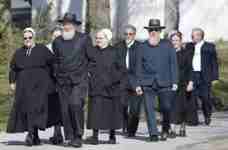

The relief of Switzerland is very mountainous and the arable surfaces were never sufficient to feed his
inhabitants. This always caused an emigration toward more generous lands. There been of some peaks more
pronounced, after the famine of 1816-1817, and between 1845-1855 and 1880-1885. This emigration was mainly
made towards North America, encouraged on the one hand by the naval companies or the "travel agencies" and
on the other hand by subsidies of the cantons or the State, so seeing an economic means to solve the problem
of overpopulation. The emigrants could not return then to Switzerland, at the risk of having to pay off the
subsidy, the interests in addition.
On the spot, the emigrants took back most of the time their rural existence. The emigrants established numerous
communities that they baptized in to remember their homeland and that we still find, too numerous however to be
allquoted. In example: New Glarus in Wisconsin, Geneva in Alabama, Idaho, Ohio, Tell City in Ohio, Helvetia in
Oregon, Nova Friburgo and Nova Geneva in Brazil.
The Swiss mercenary is a well known activity and lasted almost 600 years. The soldiers went back at home for most
at the end of their engagement. Nevertheless some got married to women of the region where they made their duty
or fought and got settled in the country of adoption.
This activity lasted until the interdiction to serve abroad by the Swiss Constitution. An exception is always
effective and concerns the Swiss Guards in Vatican.
